Character Driven Set Piece
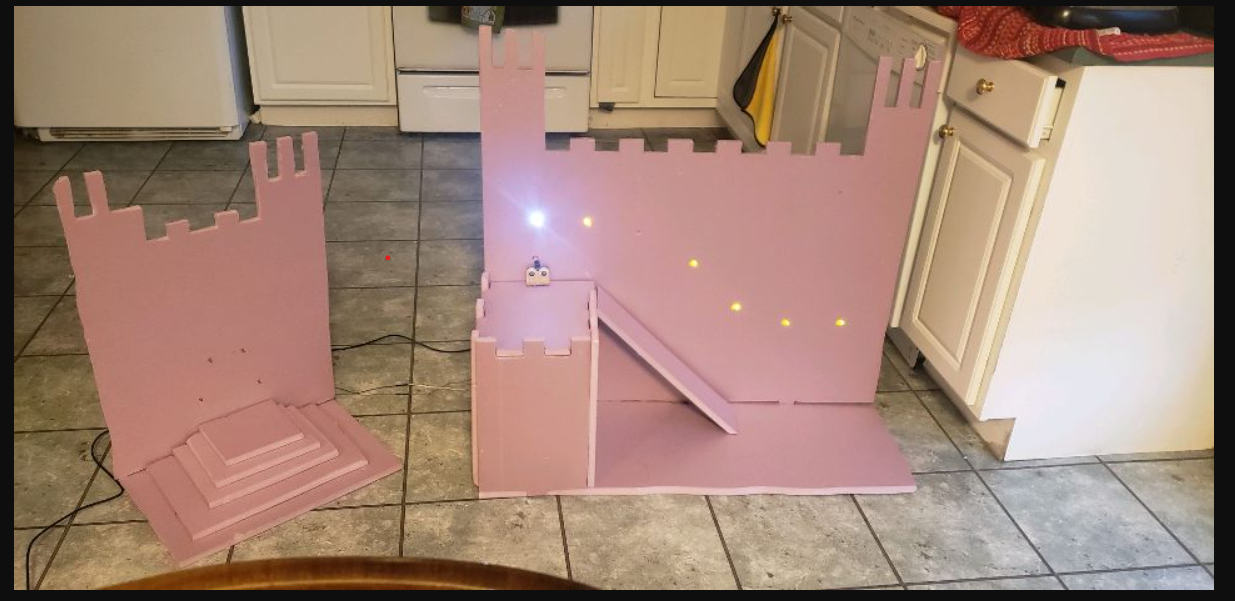
Throughout history theater has played an integral part in human society since the Greek popularized it in the 5th century. Since then Technology has progressed a lot and Theater has evolved with it. This project aims to teach students about how automation technology can be applied in modern day Theater and provide an example as to how automation can be used to enhance the storytelling experience. Using a simplified small scale example, students will learn how to code a Character Driven Set Piece. This project doesn’t require a whole lot of materials and is relatively cheap. The total price of all the components runs less than $60..
The story we aim to tell with this set piece is of raiders storming the castle immitted only by torch light as they storm up a balcony. Upon reaching the balcony, they find king! To make the reveal more dramatic, the lights near the raiders shut off and the king is revealed with lights going around his throne. (Think of this similar to a spotlight being shown)
For further clarity feel free to watch this video as demonstration: link
Supplies
1/2 in. x 4 ft. x 8 ft. Foam Board: https://www.homedepot.com/p/Owens-Corning-FOAMULA...
ELEGOO UNO Project Basic Starter Kit - https://www.amazon.com/ELEGOO-Starter-Tutorial-Com...
(4 Pcs) MCIGICM 400 Points Solderless Breadboard: link https://www.amazon.com/Pcs-MCIGICM-Points-Solderl...
Sonar Sensors w/Brackets: link
15.7in Assorted MTF MTM jumper wires: https://www.amazon.com/EDGELEC-Breadboard-Multico...
Basic Supplies:
12inch Ruler
Tape Measure
Straight Edge for Cutting/Marking
Elmer's Glue
Markers
Masking or Scotch Tape
Raider and or King (optional)
Throne (self made / optional)
Cutting the Base of the Hallway
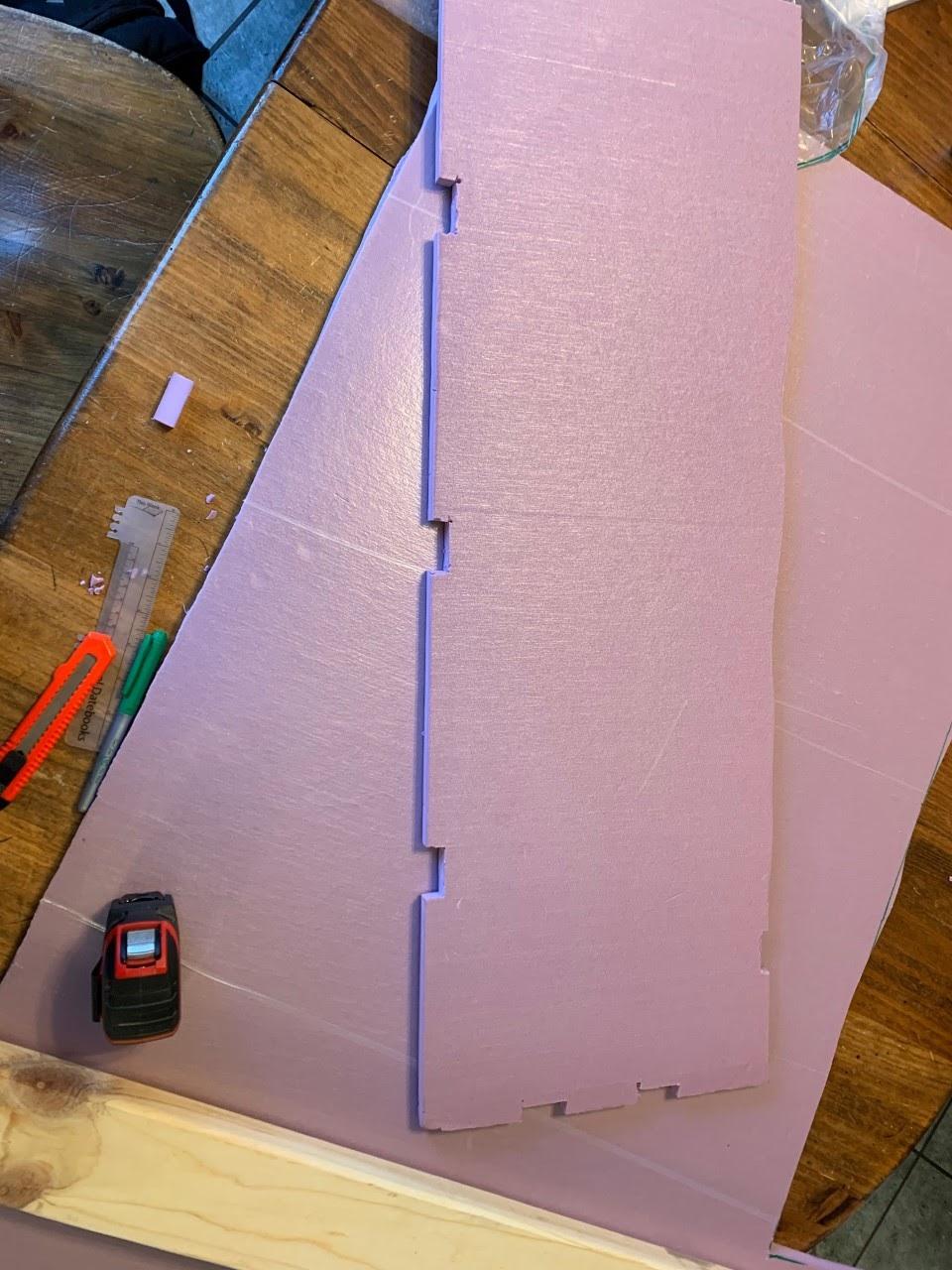
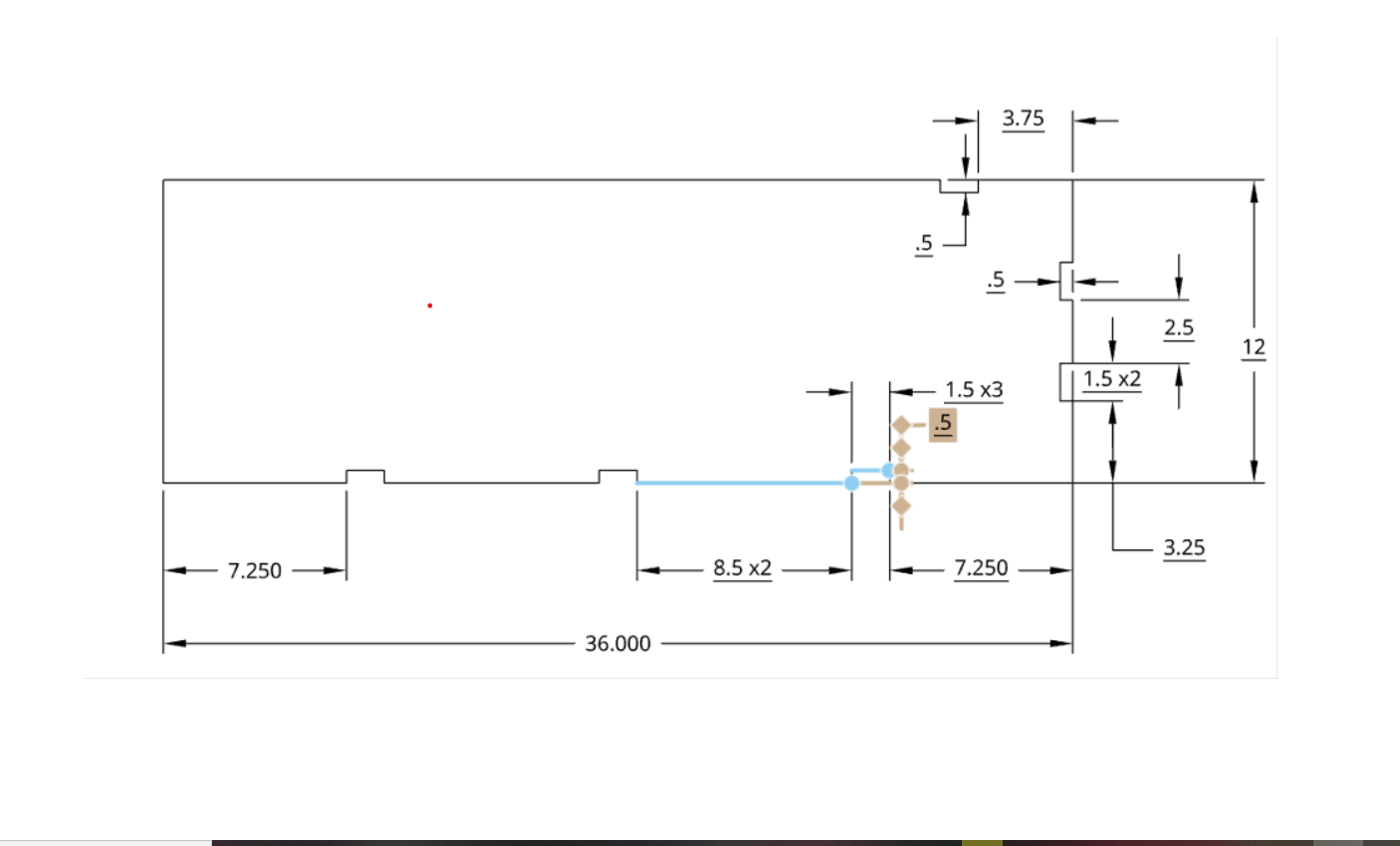
Using the mechanical drawing above, mark and cut out the given dimensions for the base out of the foamboard. A good tip here is to use some sort of large straight edge for marking and cutting to get a cleaner looking set piece.
Cutting the Rear Hallway Wall
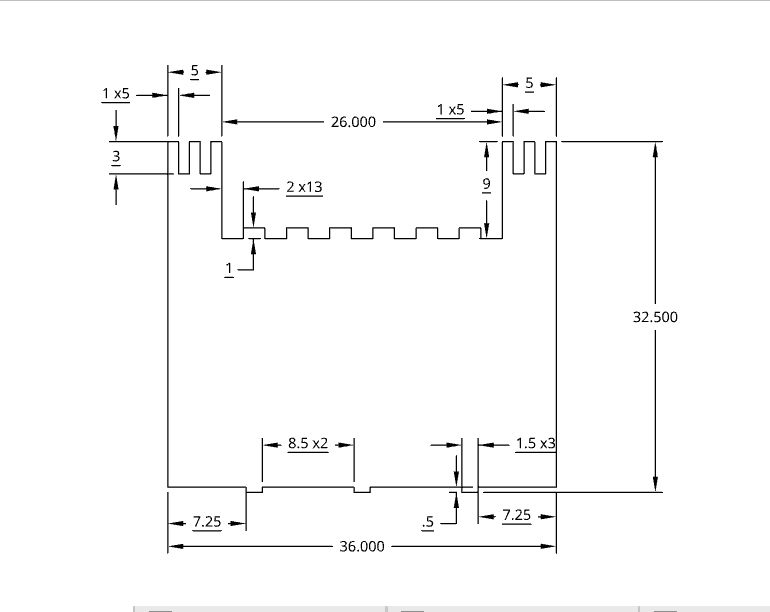

Using the mechanical drawings above, do the same thing as with the base. Mark and cut out the given dimensions. Another tip here for the rampart walls is to leave extra material and mark off what needs cut and what doesn’t. Use the other picture as an example.
Cut Out the Left Most Balcony Wall
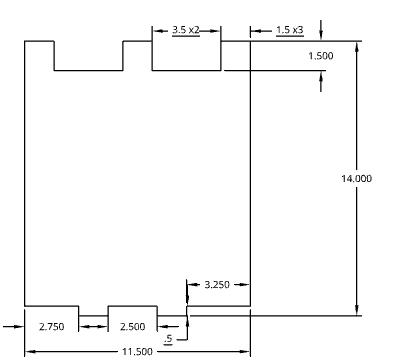
Now we will move onto the balcony that is found within the hallway assembly. By this point you should have a pretty clear idea on how to accurately mark up and cut out the pieces of the assembly. These pieces will be smaller so should hopefully take less time! Similar to before use the technical print above to mark up and cut out this piece.
Cut Out Front Most Balcony Wall

Similar to the previous step, use the technical print above to mark up and cut out this piece.
Cut Out Right Most Balcony Wall

Similar to the previous step, use the technical print above to mark up and cut out this piece.
Cut Out Balcony Base/Floor

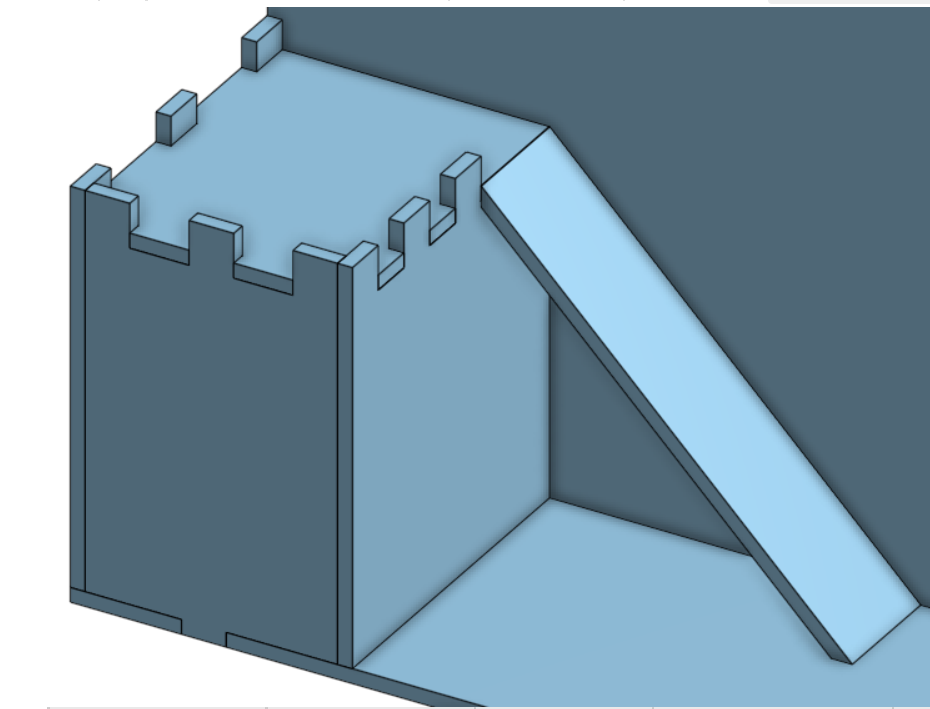
Similar to the previous step, use the technical print above to mark up and cut out this piece. BE CAREFUL, this part is particularly complex so pay close attention to detail. For reference, see the attached CAD image to better understand how this part is made.
Assemble and Fasten Together the Hallway

Mating the male ends of the cut out foam boards to the female ends, force fit each piece together to look similar to the assembly shown above. The back wall can only fit on one side of the base so it should be easy to assemble. Use glue or tape to secure each piece in place if necessary.
Create and Fasten on the Ramp
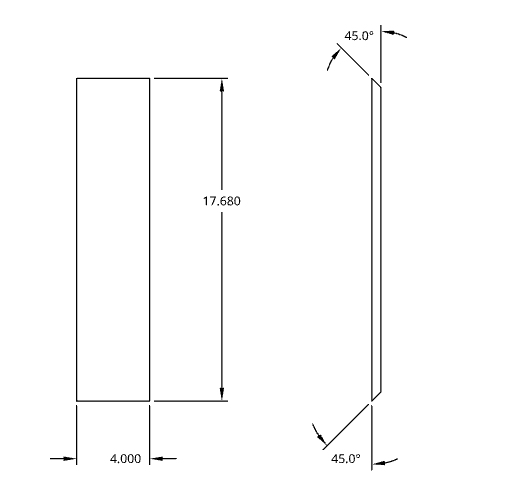
It is time to create the last part of the hallway assembly! Using the mechanical drawing above, mark and cut the rectangular ramp. The 45 degree angle on each end is completely optional and only for making the piece fit more nicely into the assembly. Use either glue or tape to fasten the ramp into place as shown by the CAD image in the previous step.
Cut Out the Throne Room Rear Wall

Moving onto the Throne assembly, similar to before mark up and cut out the foam board using the given dimensions.
Cut Out the Throne Base
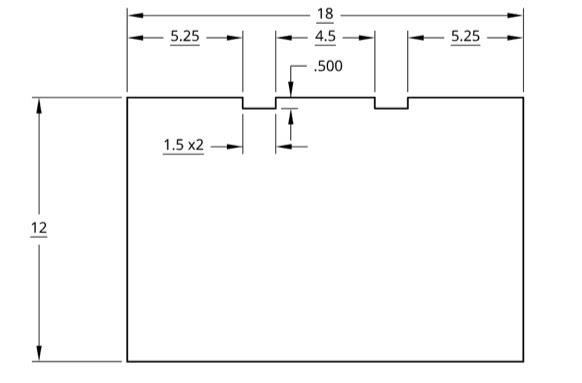
Moving on from the wall, mark out and cut out the base using the dimensions shown above.
Cut Out the Throne Steps


Pay Attention to spacing left! This part is four rectangles put together to form one part. Use the mechanical drawing above for the appropriate dimensions and use the following image as reference to how to dimension and mark up your part before cutting.
Assemble and Fasten the Throne Steps


Once all of the steps are cut out, align the steps into place making sure there is 2" on either side for the first piece, and 1" for the others and mark where the ends meet. (See images/schematic above for reference) Place glue underneath each of the smaller steps and place along the markings you just created.
Fasten the Throne Assembly Together
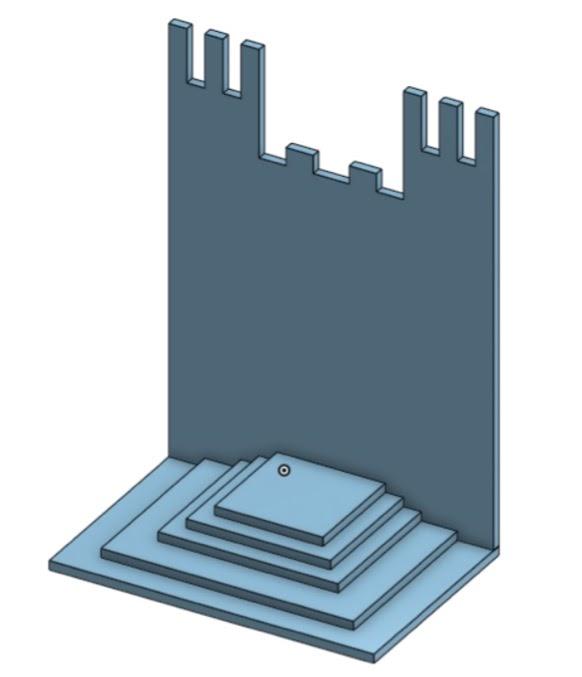
Align the newly conjoined stair case towards the center of the base making sure to leave a 1/2" of room for the rear throne wall. Once aligned glue the stairs and base into place. Add several tape loops along the back of the stairs and aligned the base and read wall with the groves, press the wall into the tape loops.
Code Overview - INTRO TO SOFTWARE CONTROLS SECTION
Congratulations you have completed the hardware sections of the project, now lets give this set piece some power! Start by opening the text file above and copy-pasting the code into the Arduino IDE software:
To more clearly understand the code, here is a line by line breakdown of what is going on:
Lines x-x:
1-2: These set the pins of our sonar sensor to their designated pins on the Uno.
4-8: Sets up the Arduino, and the pins we will use for LEDs.
10-22: This is the loop that will continuously run our program. This takes a duration found between the pins of our sensor, and calls it to another function that will divide it by a constant to give us a value in cm, of the distance of the object the sensor is picking up.
23-32: These if statements will trigger LEDS on our stage that we want to interact when the sensor reads a certain value. In this example, anything over 10 cm will trigger one part of the stage, while under 10 cm will trigger the other. Changing the 10 in this if statement will allow you to change the trigger distance.
35-38: This method is called in the loop. It uses a constant equation to determine the distance, in cm, of what the sensor is picking up.
Downloads
Flip the Sonar Around

The first step in terms of the physical software control is a tough one. Flip the sonar around so that so that the pins face upward away from the bracket. Tough stuff :)
Mark Diode Location on Hallway Assembly

Next, on the hallway assembly mark out where you want to place your diodes, make sure you follow the path the raider will take and place it above to act as torches.
Using the markings you just made, push the leads of the diode straight through the foamboard to the other end. Do this slowly and carefully, keeping the leads straight as they go through. Make sure both Diode leads are visible on the other end.
Wire the Hallway Assembly


Using both the schematic and image above, wire the diodes to the breadboard. Make sure to closely follow which wire goes to which lead, the longer lead of the two is for positive (input voltage) and the shorter negative (output voltage). When wiring make sure to include the 220 ohm resistor, as without you may risk burning out the diodes as they cannot handle voltages over 3.2V. Once everything is wired to the breadboard, peel the tape from the back and place it in the center backside of the hallway wall. (The positive comes from pin 13 on the Arduino)
To test if the diodes work, connect the positive bridge of the breadboard with the 5V pin on the Arduino Uno, and run the negative bridge to GND (Ground) on the Arduino Uno.
Mark Where to Place the Diodes on the Throne Assembly

Mark where you want to place your lights. Have them make an arc around the king/throne for a more dramatic reveal!
Using the markings you just made, push the leads of the diode straight through the foamboard to the other end. Do this slowly and carefully, keeping the leads straight as they go through. Make sure both Diode leads are visible on the other end.
Wire the Throne Assembly


Following the same concept as the before, we will now wire the throne assembly. Following the schematic and image provided, wire the LED to the breadboard. A 220 ohm resistor is placed after the digital output from the Arduino is ran to the breadboard. This is to regulate the current being applied to the LEDs. The positive wire coming from the breadboard should be attached to the longer LED lead. The shorter lead should then run back to ground. (The positive comes from pin 12 on the Arduino)
Wiring the Sonar Sensor
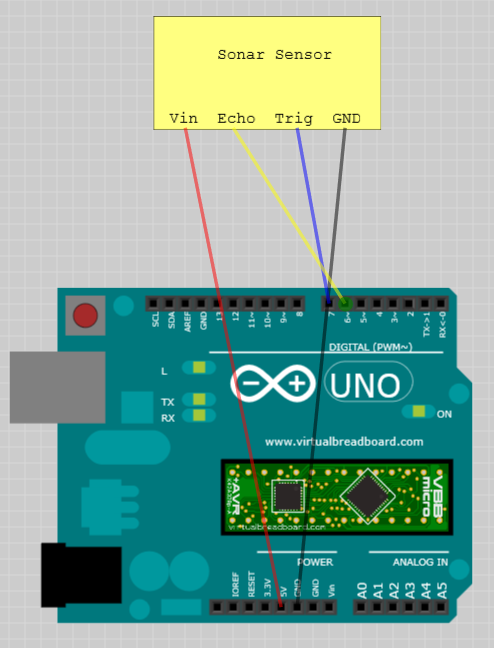.png)

The sonar sensor has 4 connections. One for 5V power, one for ground, one for trigger, and one for echo. Coming straight from the Arduino, we will want to connect the 5 V to the sensor using a Male to Female jumper wire. The ground will go straight to ground on Arduino. The echo pin of the sensor needs to connect to pin, digital pin 6. The trigger will then need to be connected to digital pin 7.
Install the Sonar Sensor

Using a tape ring on the the bottom of the bracket, install the bracket by placing it along the back of the back of the balcony facing outward. Once the Sonar is placed, cut a slot above it to allow the leads to be wired to the breadboards placed along the back. See image above for reference.
Finalize the Wiring


Following the schematic and attached image above, connect all three circuits. Make sure the code is uploaded to the Arduino and test to see if everything works!
Completion!


The attacking raiders, immitted only by torch light, should run up the balcony in which they will trip the sonar sensor, giving the king a dramatic reveal! (The black water bottle is the raiders in this example)
Hopefully this project document was useful and clear, as well as educational!